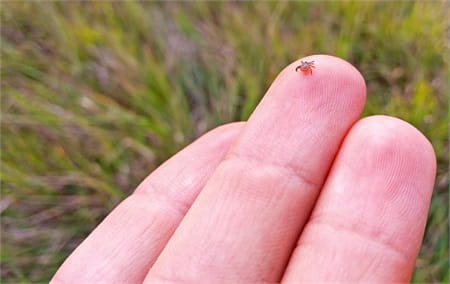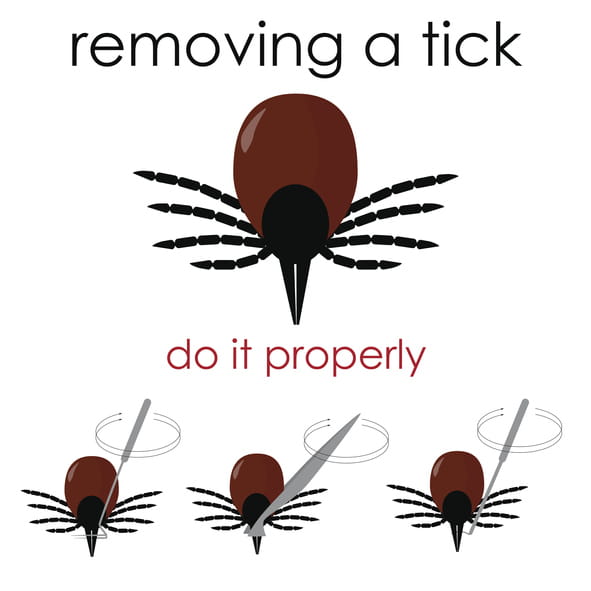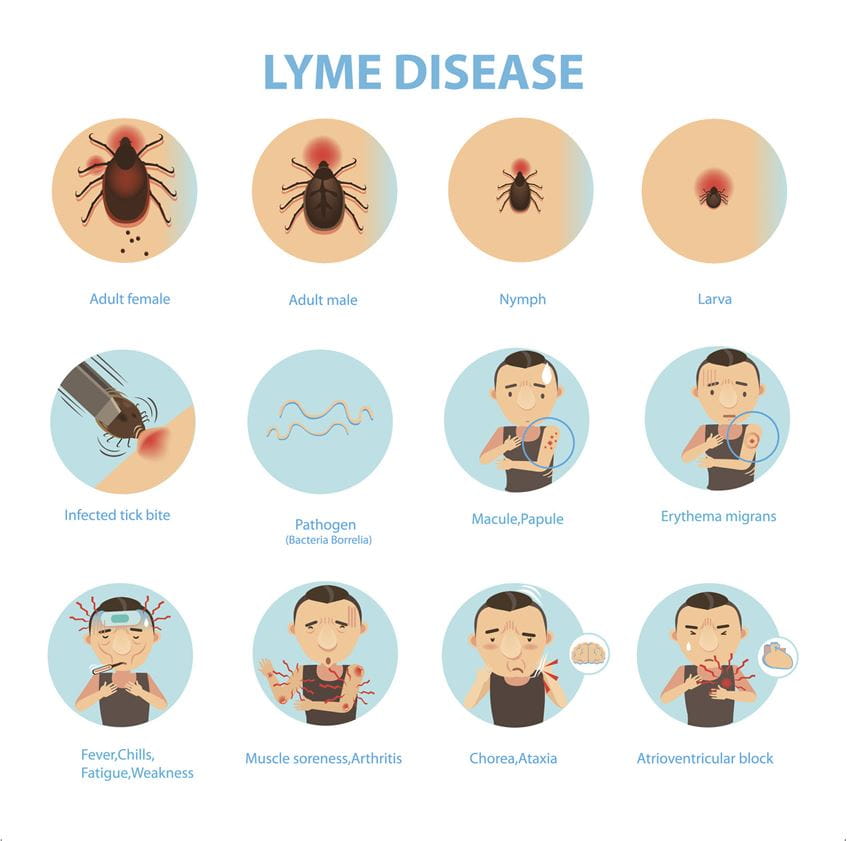Lyme disease is caused by the bacterium Borrelia burgdorferi. Deer ticks, which feed on the blood of animals and humans, can harbor the bacteria and spread it when feeding.
How You Can Prevent Lyme Disease
While this past winter may have been frightful, researchers have found that even frigid temperatures won’t make a sizable dent in the deer tick population. Knowing where, how and when Lyme disease is most often contracted can help you prevent it as these pesky, pint-sized carriers crawl out of their hiding places.
Location, Location, Location

Deer ticks spend their time hanging out in piles of leaves and other undergrowth. When it warms up, they climb bushes, weeds and grass and wait for unsuspecting passersby to brush past.
You can avoid Lyme disease by steering clear of tall plants. In the woods, stick to the center of the trail. At home, clean up fall leaves, create a brush-free zone on porches and walkways, and try to keep the ticks’ favorite meal—deer—out of your space.
Keep Them Off

When you spend time outside, wear light clothing so ticks will be easy to see, tuck pants into socks and shoes, and cover exposed skin with insect repellent.
Tick Check
Check for ticks every day, especially if you’ve spent time outside. It takes about 36 hours for a tick to transfer Lyme disease. Remove any ticks that you find right away to reduce your chances of getting it.
Be sure to look around your ears, in your belly button, under your arms, between your legs, behind the knees and under your hair. You may need a mirror or a partner to perform a thorough scan.
Stages Of Infection
The signs and symptoms of Lyme disease vary and usually affect more than one system. The skin, joints and nervous system are affected most often.
Early Infection: These signs and symptoms may occur within a month after you've been infected:
- Rash - A small, red bump may appear at the site of the tick bite. This small bump is normal after a tick bite and doesn't indicate Lyme disease. However, over the next few days, the redness may expand forming a rash in a bull's-eye pattern, with a red outer ring surrounding a clear area. The rash, called erythema migrans, is one of the trademarks of Lyme disease. Some may develop this rash at more than one place on their bodies.
- Flu-like symptoms - Fever, chills, fatigue, body aches and a headache may accompany the rash.
- Asymptomatic - You might not show any of the above signs or symptoms.
Disseminated / Late Disease: In some people, the rash may spread to other parts of the body and, several weeks to months after you've been infected, you may experience:
- Joint pain - You may develop bouts of severe joint pain and swelling. Your knees are especially likely to be affected, but the pain can shift from one joint to another.
- Neurological problems - Weeks, months or even years after you were infected, you may experience inflammation of the membranes surrounding your brain (meningitis), temporary paralysis of one side of your face (Bell's palsy), numbness or weakness in your limbs, and impaired muscle movement.
- Carditis - Fluctuating atrio-ventricular block and it could progress to complete heart block

Other Resources
- Stages of Lyme Disease
- Misdiagnosis of Lyme Disease
- Lyme Disease Test
- Lyme Disease: The Role of Blood Tests
- PA study finds high Lyme disease risk in all 67 counties - Interview with Dr. Goldman
- http://www.cdc.gov/lyme/
- Don't Let a Tick Make You Sick! - Resource from the CDC
Providers
Our Locations




















